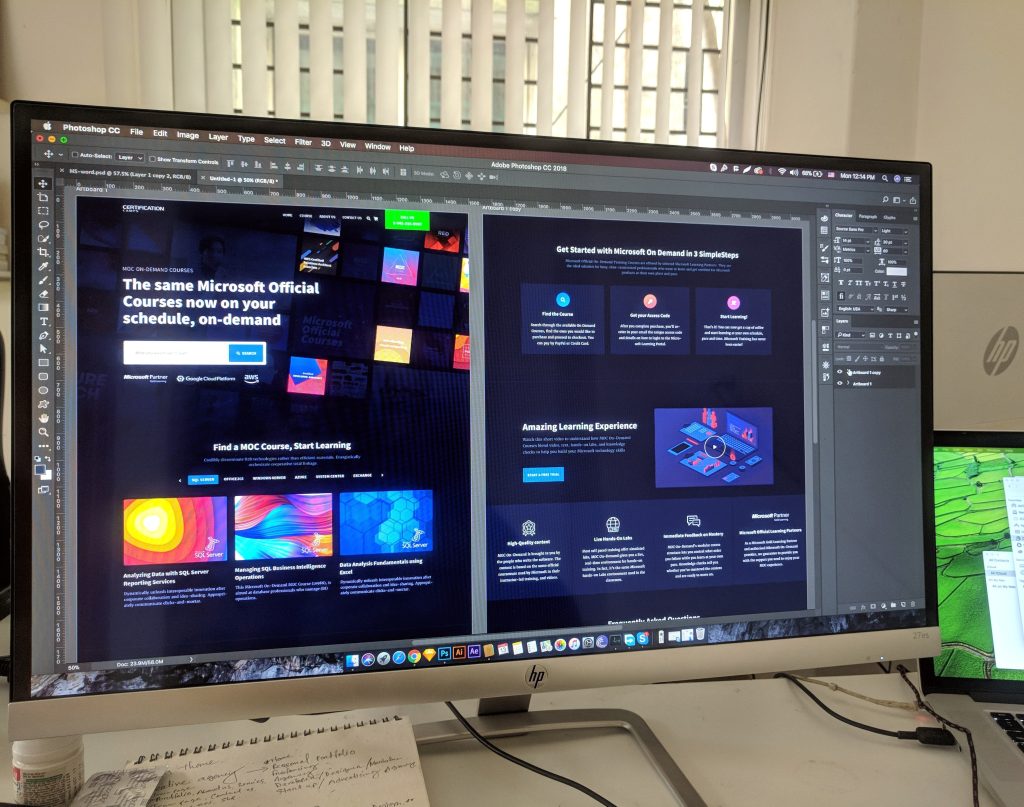
In the contemporary digital landscape, most global internet users access online content through various mobile devices, including smartphones, tablets, laptops, and even smartwatches. This profound shift in user behavior underscores websites’ need to adapt to varying screen sizes and resolutions. Responsive web design emerges as the solution to this challenge. This article delves into the fundamental concepts of responsive web design, underscores its significance in contemporary web development, and provides insights into effective implementation. Additionally, it offers a comparative overview of responsive web design services across different countries, outlines the educational prerequisites for mastering this skill, and identifies accessible avenues for acquiring this knowledge at no cost.
Table of Contents
Defining Responsive Web Design Services
Responsive web design represents a strategic approach to web development that empowers websites to dynamically adjust their layout, content, and visual elements in response to diverse screen sizes and orientations. By adopting responsive design principles, websites can deliver an optimal viewing experience, ensuring seamless accessibility and interaction for users across various devices.
The Value of Responsive Web Design Services
1. Consistency in User Experience
Responsive web design ensures that users enjoy a uniform and consistent experience, irrespective of the device they employ to access a website. This consistency is integral in retaining user engagement and satisfaction.
2. Enhanced Mobile Experience
Given the surging prevalence of mobile devices, responsive web design is instrumental in ensuring that websites provide an exceptional user experience, even on smaller screens. This, in turn, contributes to heightened user engagement and diminished bounce rates.
3. Improved SEO Performance
Leading search engines, including Google, prioritize mobile-friendly websites in their search results. Therefore, responsive web design can significantly enhance a website’s visibility and organic search rankings.
4. Cost-Effective Development
Instead of developing separate websites for distinct devices, responsive web design allows for managing a single, adaptable website. This approach not only curtails development costs but also streamlines maintenance efforts.

The Imperative of Responsive Web Design
In today’s fiercely competitive online environment, it is imperative for websites to cater to the ever-expanding mobile user base. Neglecting responsive web design may result in losing potential customers and negatively impacting a website’s performance. Furthermore, responsive design is instrumental in elevating search engine rankings, optimizing conversion rates, and maintaining a competitive edge.
Explore: UI Designer Jobs
Core Principles of Responsive Web Design
1. Fluid Grid Layouts
Responsive design shuns the use of fixed-width grids, instead opting for fluid grids that adjust dynamically based on percentage-based measurements. This approach guarantees the layout’s flexibility and seamless adaptation to various screen sizes.
2. Responsive Images
Images incorporated into responsive websites must be meticulously optimized to accommodate diverse device dimensions. Using CSS techniques, such as setting maximum image widths to 100%, images can scale proportionally without distortion or overflow.
3. CSS Media Queries
Media queries are instrumental in applying CSS styles based on specific device attributes, such as screen width, orientation, and resolution. This level of customization allows for targeted styling at predefined breakpoints.
4. Determining Breakpoints
Breakpoints are specific screen width thresholds at which a website’s layout adjusts to accommodate varying screen sizes. Determining and implementing these breakpoints ensures a website’s content is presented optimally across various devices.

Learning Responsive Web Design for Free
Several reputable online platforms provide invaluable resources and courses for those eager to acquire proficiency in responsive web design without incurring financial costs. Here are a few commendable options:
1. MDN Web Docs
Mozilla Developer Network offers a comprehensive documentation repository on web technologies, including responsive web design. Their guides and tutorials span the core principles and best practices of responsive design.
2. Codecademy
Codecademy offers interactive coding lessons, including a course dedicated to responsive design. Their hands-on approach enables learners to practice skills and apply responsive techniques to real-world scenarios.
3. W3Schools
W3Schools is a widely respected online resource for web development education. Their offerings include tutorials, examples, and exercises centered on responsive web design and detailed explanations of HTML, CSS, and JavaScript concepts.
Learn More: Entry-Level UX Designer Jobs
Salaries in Prominent Countries for Responsive Web Design Services
Below is a comparative overview of average annual salaries for responsive web design professionals in select countries:
| Country | Average Salary (USD) | Educational Requirements |
|---|---|---|
| United States | $60,000 – $100,000+ | Bachelor’s degree in web design or related field |
| United Kingdom | £30,000 – £60,000 | Bachelor’s degree in web design or related field |
| Canada | $45,000 – $80,000+ | Diploma or degree in web design or related field |
| Australia | $50,000 – $90,000+ | Diploma or degree in web design or related field |
| Germany | €35,000 – €70,000 | Diploma or degree in web design or related field |
In Conclusion
Responsive web design is a cornerstone for creating engaging and accessible websites in the contemporary mobile-centric world. By meticulously implementing responsive design principles, websites can provide users with a consistent and exceptional experience across various devices, amplify mobile engagement, and enhance their visibility on search engines.
FAQ’s
Q1. What constitutes responsive web design?
Responsive web design is a method of web development that facilitates the dynamic adaptation of a website’s layout and content to accommodate various screen sizes and devices. This ensures an optimal user experience, regardless of the device being used, such as desktop computers, tablets, or smartphones.
Q2. Could you elaborate on responsive web design and its associated benefits?
Responsive web design is an approach that enables websites to adjust their appearance and functionality across different screen sizes and devices. The advantages include improved user experience, increased mobile traffic, enhanced search engine optimization (SEO) rankings, reduced development and maintenance costs, and the maintenance of a consistent brand image across all devices.
Q3. What distinguishes responsive design from adaptive web design?
Responsive web design and adaptive web design are both methodologies for creating mobile-friendly websites. Responsive design employs fluid grids and CSS media queries to adapt to varying screen sizes, while adaptive design relies on predefined layouts for specific device categories. Responsive design offers greater flexibility and cost-effectiveness, while adaptive design provides finer control over each layout.
Q4. What are the fundamental components necessary for implementing responsive web design?
Responsive web design hinges on three fundamental elements:
a. Fluid Grids: These grid systems employ relative units, such as percentages, to construct adaptable layouts.
b. Media Queries: Media queries are CSS rules that trigger different styles based on screen size or device capabilities.
c. Flexible Images and Media: This ensures that images and media elements can scale and conform to diverse screen sizes.
Q5. How is responsive design applied within the realm of CSS?
Responsive design in CSS pertains to utilizing Cascading Style Sheets to define styles and layout attributes that can dynamically adjust to accommodate various screen sizes and devices. This is accomplished through the application of media queries, flexible units, and other techniques, allowing the creation of responsive layouts and user interfaces for websites.


